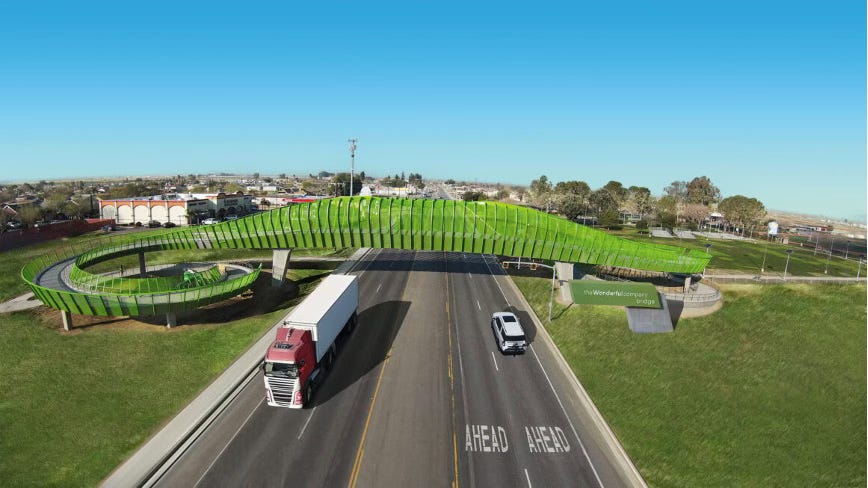Finding Lost Hills in the Central Valley
A complete make-over for a small town in California, thanks to planners, professionals, residents, and philanthropists.

Dear Our Towns followers,
We recently spent a week in California’s agricultural Central Valley, famous for producing as much as 25% of our country’s food supply. The region is rich in output, poor in income, and home to big, under-reported stories about its immigrants, and about its bold moves in higher education, progressive transportation experiments, and high-tech farming processes.
This road trip took us from Bakersfield, north 110 miles as the crow flies to Fresno, a town we’ve been visiting and reporting on for over a decade. We have kept our eye on Fresno, still striving to meet its self-anointed cheeky nickname of Fres-Yes.
The first in this reporting series is about the very tiny community of Lost Hills, 45 miles north and west of Bakersfield. Still unincorporated more than a century after its founding, Lost Hills saw some of the classic waves of settlers. Okies fleeing the Dust Bowl. Farm workers from Mexico in the bracero program. Lost Hills today is 98% Hispanic, with some 40% of its population of 1800 (or 2300 depending on how you’re counting) foreign born.
If you see in your mind’s eye the images of workers in almond or citrus groves, 15-year-olds in festive quinceaneros dresses, pickup trucks, bungalows and doublewides, all under the fierce and unremitting sun, you would be accurate.
But there is also something entirely unforeseen, and fortunate in winning-lottery-ticket proportions, that has been going on in Lost Hills. Thanks to a wholistic vision and philanthropic commitment, Lost Hills has powered through big changes in the last 15 years:
The construction of an architectural wonder of a pedestrian bridge that spans a notoriously dangerous highway to safely connect residents in split sides of the town.
A state-of-the-art park, playground, splash pad, sports field, and community center.

A new public K–12 charter school, which charges no cost to its students and that also offers entirely for free three healthy meals a day, a comprehensive health clinic, and wrap-around services for students and families, bus transportation to school.
Two new affordable housing developments of apartments and stand-alone houses, with big backyards.
Newly-paved streets and sidewalks, street lamps, a restaurant.
A women’s arts initiative that has brought new skills and a solid income, as well as pride, to women in the community.
Guidance on immigration issues, from preparing official paperwork to dealing with surprise ICE visits.
We have seen bits and pieces of similar developments and improvements in towns across the country. But we have never before seen the whole package all at play, all at once, coordinated and concentrated in one town.
Who are the players? What are they doing? We hope you’ll click on this link to read about Lost Hills, the people who are building and living their American Dream, and the benefactors who are helping make it happen.
Thank you.




